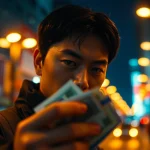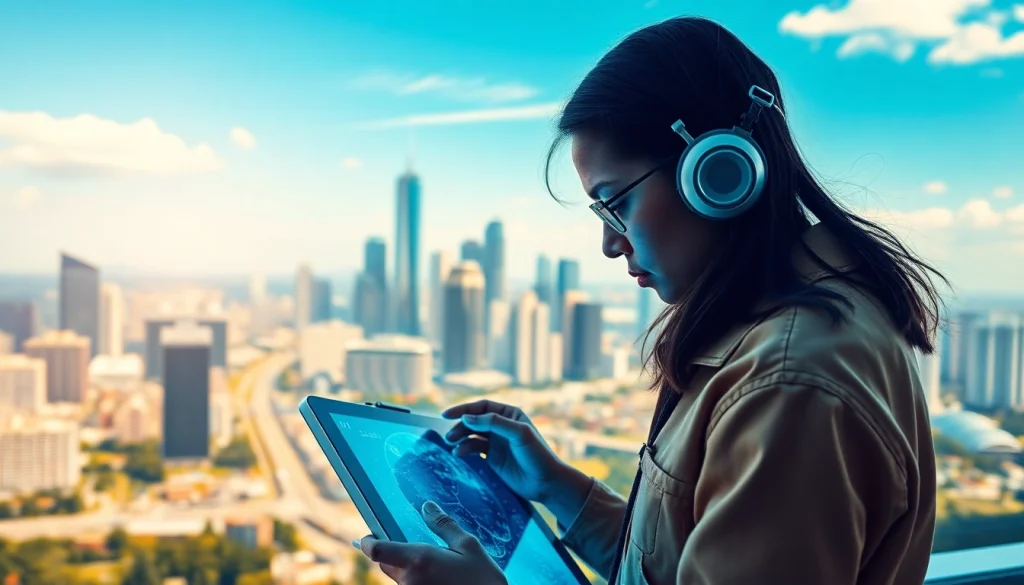Introduction to AI Image Generators
In today’s digital age, creativity has taken on new forms, driven by innovative technologies like artificial intelligence (AI). One such advancement is the emergence of AI image generator Australia, which has revolutionized how art and design are created. These powerful tools can generate high-quality visuals from mere text prompts, eliminating tedious manual design processes and opening up new avenues for artists and non-artists alike. This article serves as a comprehensive guide that explores the world of AI image generators, their benefits, features, and how to get started with them effectively.
Understanding AI Image Generation
AI image generation relies on sophisticated algorithms and models, particularly deep learning, to interpret language and create corresponding visuals. These models, such as Generative Adversarial Networks (GANs) and Variational Autoencoders (VAEs), are designed to learn from vast datasets, encompassing diverse styles, subjects, and artistic expressions. As a result, they can produce artwork that ranges from photorealistic images to abstract renditions, all dictated by the user’s input.
Benefits of Using AI Image Generators
The utilization of AI image generators comes with numerous advantages:
- Speed: AI can generate images in seconds, which is significantly faster than traditional methods.
- Accessibility: They allow users without formal artistic training to produce compelling visuals, democratizing art creation.
- Cost-Effectiveness: By reducing the need for professional design services, individuals and businesses can save money.
- Endless Creativity: Users can experiment with various prompts and styles, expanding their creative horizons effortlessly.
Key Features of AI Image Generator Australia
Australian AI image generators come equipped with features designed to enhance user experience:
- User-Friendly Interfaces: Many tools prioritize ease of use, allowing users to navigate the software effortlessly.
- Customization Options: Users can often specify styles, colors, and more to achieve desired results, tailoring the output to their needs.
- Community Sharing: Many platforms include features for users to share their creations, fostering community and collaboration.
- Integration with Other Tools: Some generators seamlessly integrate with design software, making the transition from idea to execution smoother.
How to Choose the Right AI Image Generator
With a plethora of AI image generators available, selecting the most suitable one for your needs can be overwhelming. Below are some tips to guide your decision-making process.
Comparing Leading AI Image Generators
When evaluating different tools, consider factors such as:
- Output Quality: Evaluate sample images to determine if the generator produces the quality you’d expect.
- Flexibility: Some generators may focus on specific styles; look for one that aligns with your artistic goals.
- Community Feedback: Explore user testimonials and expert reviews to gauge overall satisfaction with each tool.
Factors to Consider When Selecting a Tool
Beyond basic comparisons, consider the following specific factors that can impact your experience:
- Cost: While many generators offer free tiers, paid options often provide additional features. Assess your budget versus your needs.
- Learning Curve: Some tools may require a steeper learning curve than others. Prioritize those with ample tutorial resources if you’re a beginner.
- Licensing and Usage Rights: Understand the rules regarding how you can use images generated by the tool, especially if you plan to monetize them.
User Testimonials and Reviews
User experiences can provide invaluable insight into how a tool functions in real-world scenarios. Seek out platforms hosting reviews, or engage with communities where users share their success stories and challenges. Popular choices like DALL-E 2, MidJourney, and Artbreeder have extensive user bases that provide feedback on their efficiency, usability, and output quality.
Getting Started with AI Image Generator Australia
Now that you’re equipped with knowledge about selecting an AI image generator, let’s dive into how to use these tools effectively to create stunning visuals.
Creating Your First Image
Starting your journey with an AI image generator is often as straightforward as inputting a descriptive prompt. Here’s a quick guide:
- Choose your AI image generator from trusted sources.
- Create an account if necessary and log in.
- Enter a descriptive prompt, specifying the elements you want in the image.
- Adjust any settings (style, quality, resolution) as available.
- Click ‘Generate’ and wait for the output.
- Review your image and tweak your prompt as needed for better results.
Tips for Crafting Effective Prompts
The success of your generated images heavily relies on your prompts. Here are some tips to refine your prompts for optimal results:
- Be Specific: The more details you provide, such as colors, styles, or themes, the better the generator can create what you’re envisioning.
- Use Simple Language: Avoid overly complex phrases that might confuse the AI; clarity is key.
- Iterate: Don’t hesitate to experiment with variations of your prompt to see what works best.
Common Mistakes to Avoid
As with any new technology, there are potential pitfalls. Here are some common mistakes to watch out for:
- Neglecting Research: Not all tools are created equal. Make sure to read reviews and comparisons to find the best fit.
- Ignoring Licensing Rules: Always verify how you can use the generated images to avoid legal conflicts later.
- Overcomplicating Prompts: Simple, clear prompts generally yield the best results. Complicated language can confuse the AI.
Advanced Techniques for Image Generation
Once you’re comfortable with the basics, there are advanced techniques you can employ to enhance your image generation process.
Utilizing Custom Styles and Effects
Many AI image generators allow for style customizations. Experimenting with different artistic styles—such as impressionism, surrealism, or pop art—can drastically change the aesthetic of your outputs. Familiarize yourself with the style options provided by your chosen software, and don’t shy away from mixing styles to produce unique results.
Integrating AI with Creative Projects
AI image generators can be integrated into various creative projects, from marketing campaigns to personal art portfolios. Consider using generated images as starting points that you can then enhance or incorporate into other mediums, such as graphics design, video content, or web design. The possibilities are vast, enabling a fusion of traditional creative processes with modern technology.
Case Studies of Successful Image Creation
Several artists and businesses have successfully integrated AI image generators into their workflows. For example, a local Australian artist utilized an AI image generator to create visuals for their new exhibition. By generating several styles and ultimately narrowing down to the most resonant pieces, the artist was able to elevate the overall presentation of their work, attracting a larger audience and garnering critical acclaim.
The Future of AI Image Generation in Australia
As AI technology continues to evolve, the landscape of image generation will also transform, presenting an array of opportunities and challenges that the creative world must navigate.
Trends and Innovations to Watch
The AI image generation sector is rife with emerging trends, including:
- Real-Time Generation: As computational power increases, real-time image generation is becoming more realistic and practical.
- Personalization: Future generators may allow for hyper-personalized outputs based on user preferences and previous interactions.
- Collaboration between AI and Humans: Further advancements may see AI working as a collaborator rather than just a tool, allowing for a seamless blend of human expression and machine learning.
Impact on Creative Industries
AI image generators have the potential to disrupt traditional creative industries dramatically. They can lead to cost reductions for businesses and democratization of art itself. However, there’s also concern regarding the dilution of human artistry and the value placed on creative work. Creative professionals will need to adapt, possibly shifting their roles from manual creators to curators and strategists overseeing AI-generated outcomes.
Legal Considerations and Copyright Issues
The rise of AI-generated art raises significant questions about copyright and ownership. Legally, the current Australian framework does not address ownership of AI-generated materials explicitly, posing challenges for creators seeking protection for their work. However, a requirement for a human author for copyright ownership remains essential, meaning that creators must establish the human element in their projects to claim rights. Keeping abreast of legal developments in this area is crucial for anyone working within the AI image and art space.





